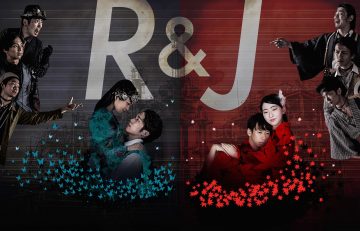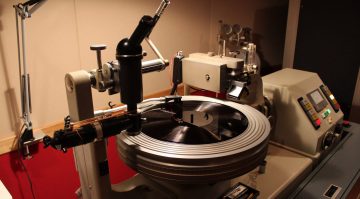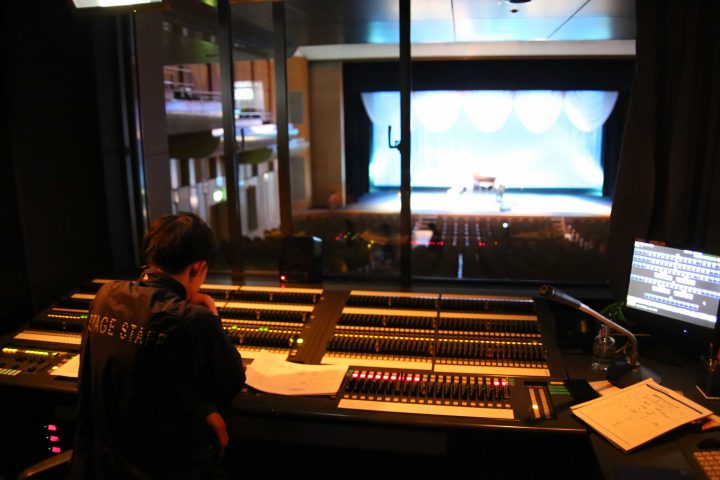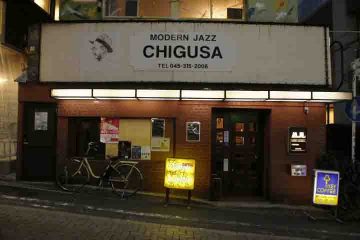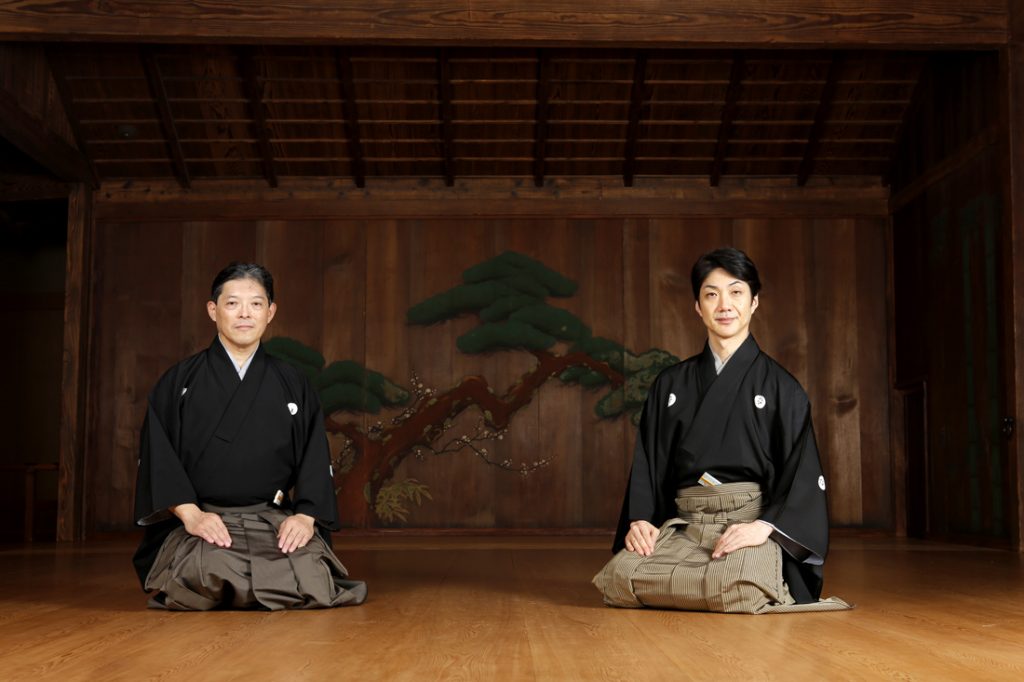
Nakamori Kanta performs Noh with Japanese and English subtitles on a dedicated monitor installed on the Noh stage. Nomura Mansai is also active in cross-genre expression, such as performing Shakespeare in the style of Kyogen and dancing to modern music. After their joint performance at the "Noh Learning Gathering" held at the Yokohama Noh Theater the other day, the two talked about the appeal of Noh and Kyogen, traditional Japanese performing arts, and their future activities.
In the first part, we will hear about his thoughts on new endeavors that preserve the traditions of Noh and Kyogen while appealing to modern audiences.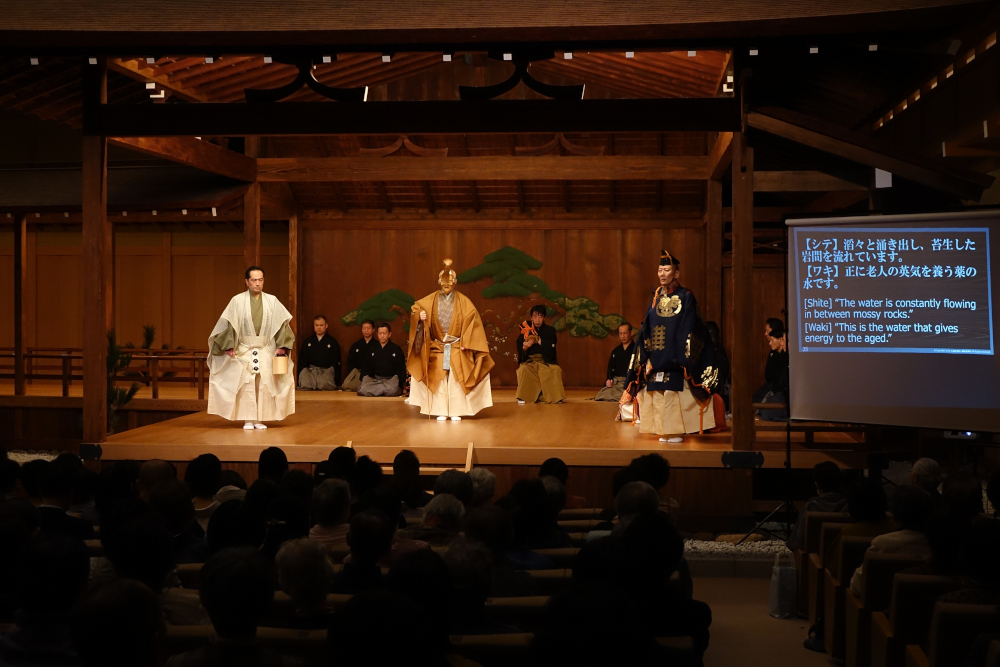
Nakamori Kamakura Noh Stage uses subtitles in order to allow first-time visitors and visitors from overseas to fully enjoy Noh.
Nowadays, only a very small minority of people know the story and rules of Noh, so they need some kind of help to enjoy the show. However, if the meaning of the movements and lines are all subtitled, the audience will be busy reading the subtitles and will not have time to watch the show. We want the audience to enjoy the world unfolding on stage while using their imagination, so subtitles are merely a supplement. We are still in the experimental stage, but we are exchanging opinions with a team researching earphone guides and would like to provide something even better.
The lines of Nomura Kyogen are written in colloquial language, so even if they are archaic words, they are somewhat understandable. However, there are words that cannot be understood just by listening to the audio, so we provide a dictionary function in the pamphlets for the performances we host. For example, "Bumo" means "parents" in writing, so if you check the word beforehand, you can understand it without reading the subtitles. We want to provide a way for viewers to choose how they can enjoy the show.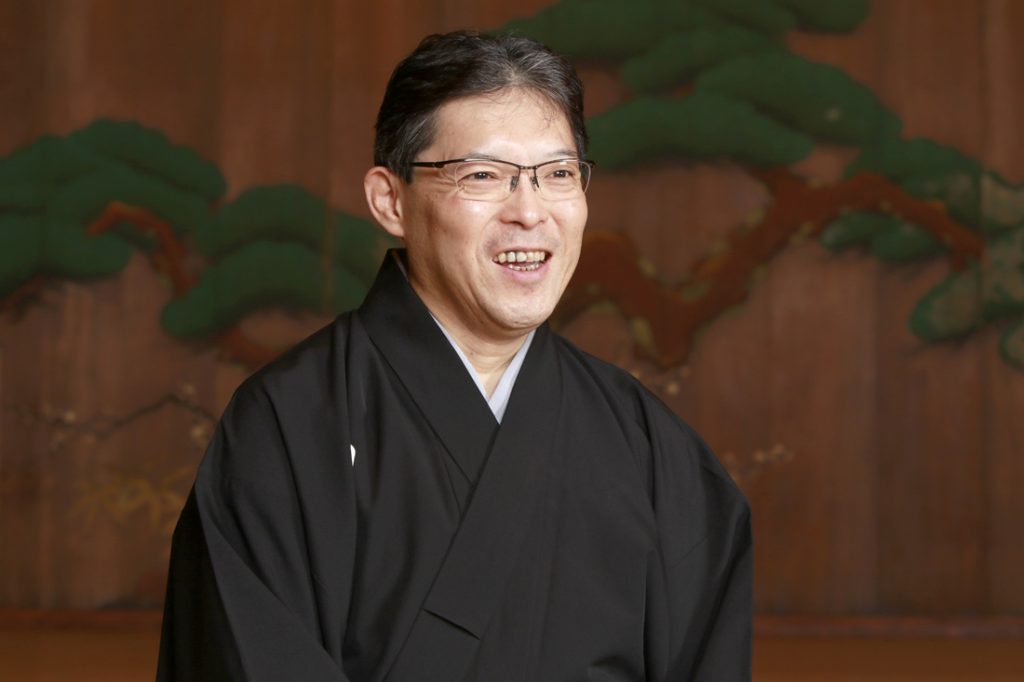
Nakamori : I think that in modern Japan, many people are imprinted with the idea that Noh is "difficult" and "not interesting." We also visit schools, but most of the teachers and parents of students have never seen Noh. In this situation, the first priority is to get them interested in Noh. We will continue to actively visit schools in the future, and we also believe that viewing support such as subtitles is necessary.
However, if we were to change the stage performance to make it easier to understand, it would no longer be Noh. We are currently searching for a way to maintain the traditional form while still making it understandable to everyone.
Nomura cuisine would become something completely different if the recipes were changed, but the same can be said for Noh and Kyogen. We treasure the traditional tableware of the "Noh theater," and sometimes perform in facilities such as schools or in open-air spaces such as takigi Noh. Even in such cases, it is important that you enjoy the food while following the recipes.
However, there is a dilemma that the language used in the world of classical Japanese is as difficult to understand as a foreign language, even though it is in Japanese. The Noh and Kyogen world is trying various things to address this issue, such as adding subtitles and changing the presentation method, so I would like you to visit a Noh theater and experience it for yourself.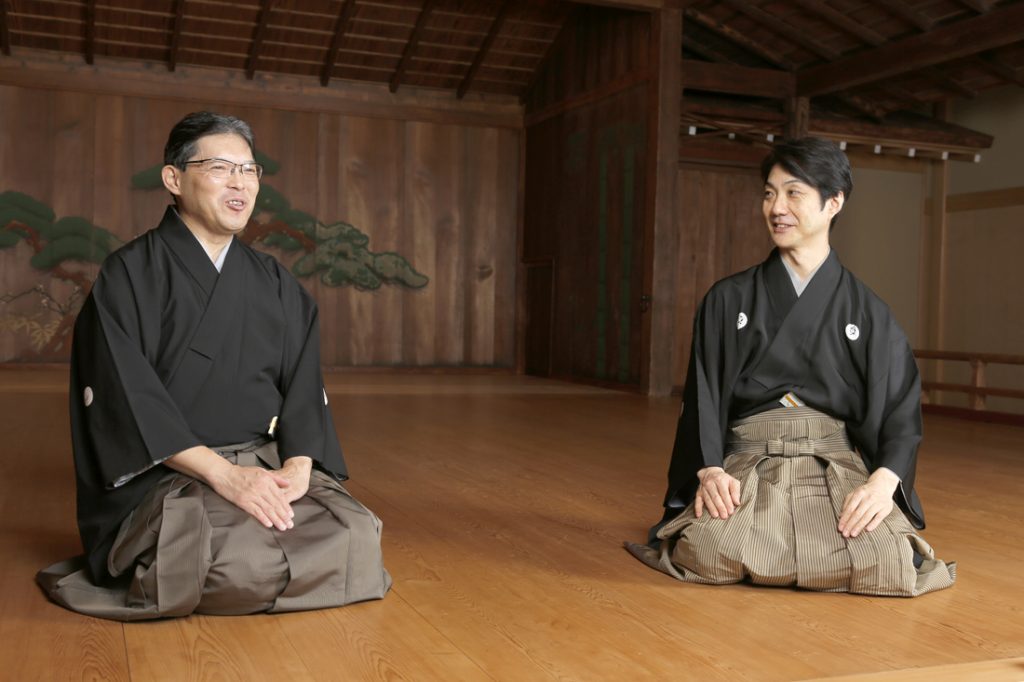
Nomura: I am also trying to collaborate with different genres, but this is only possible if I can find a connection with the world of Kyogen.
For example, I have danced to the music of contemporary composer John Cage, who creates music based on natural phenomena such as the sound of the wind and the color of the sky, which is exactly the world of Noh and Kyogen. Also, when performing Shakespeare in the Kyogen style, the common thread is the "Middle Ages." Beings beyond human knowledge, fearsome powers, and fear of God are also themes of Kyogen, so they can be performed without difficulty.
So, if you ask me, "Will you dance to disco sounds?" I won't say, "It's absolutely impossible," but I wonder if we don't have to dance to digital rhythms. I don't think there's anything we can't do, but then the goodness of Kyogen will disappear. I think the point is whether there is something that is connected to Kyogen at the root.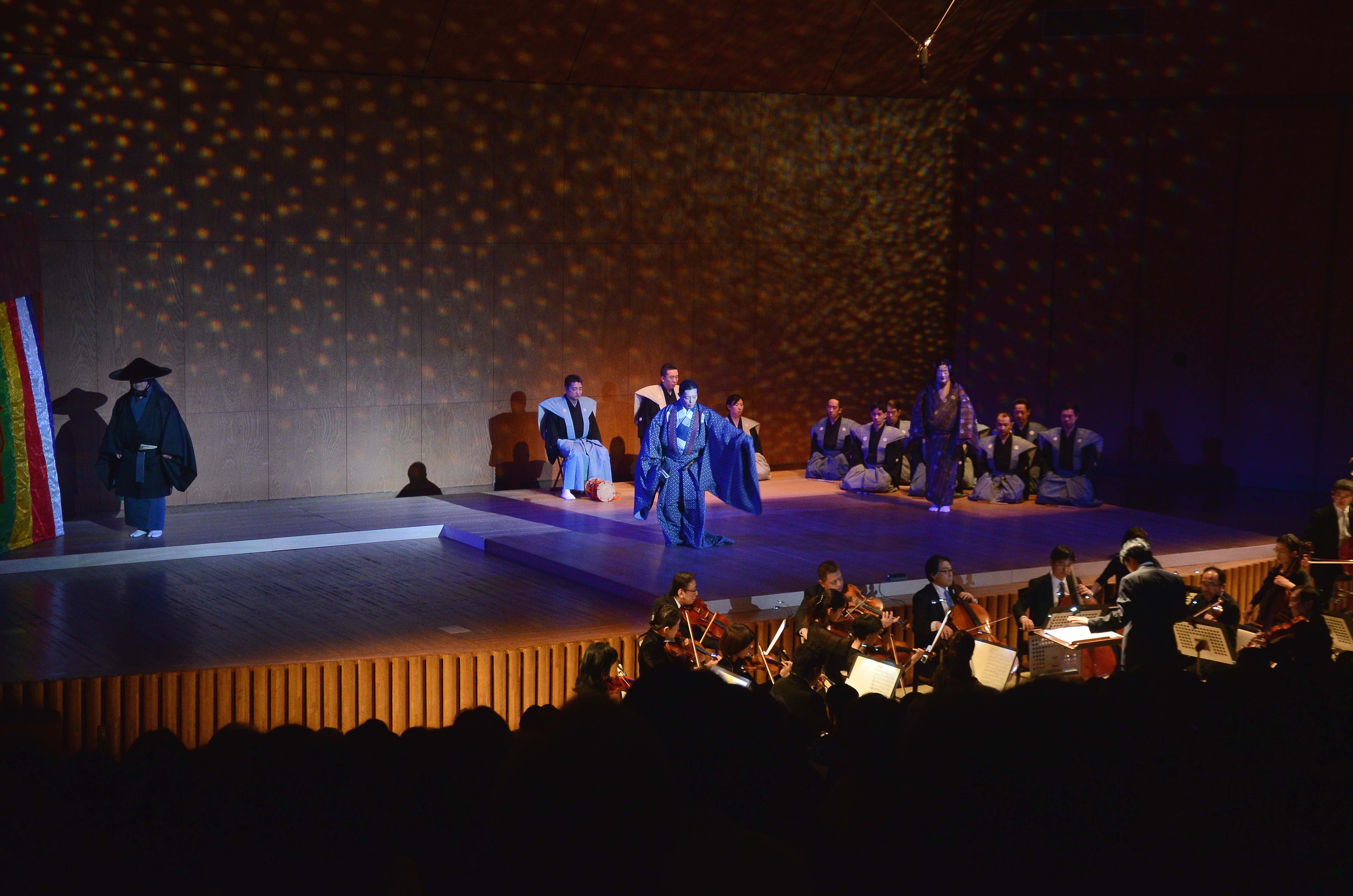 I have performed with the Nakamori Orchestra before, but I felt that either we would have to dance to the orchestra or the orchestra would play the background music for the Noh performance, which would mean compromising. It would be different if they had the time and budget to write original music, but it's difficult to collaborate casually.
I have performed with the Nakamori Orchestra before, but I felt that either we would have to dance to the orchestra or the orchestra would play the background music for the Noh performance, which would mean compromising. It would be different if they had the time and budget to write original music, but it's difficult to collaborate casually.
I also choreographed "Bolero" for Nomura Ballet Music, but this was possible because it has something in common with the Kyogen dance "Sanbaso". The important thing is to find the common ground between the two and connect them together. If the connection is not convincing to the audience, they will say it's "strange".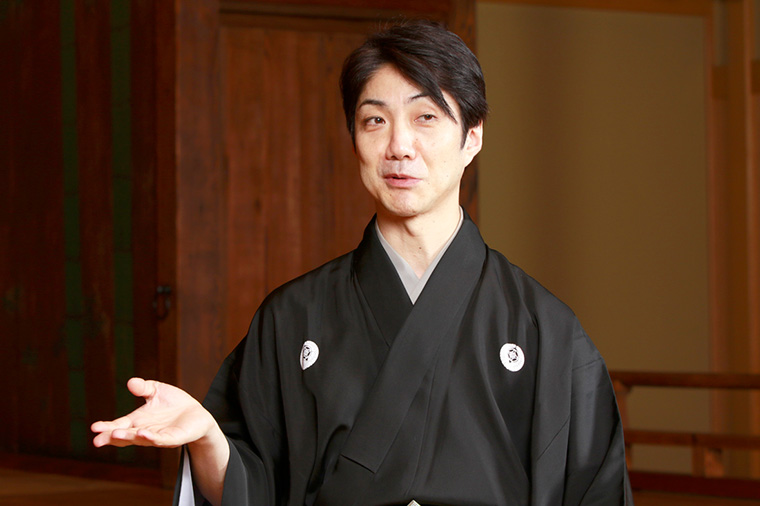
Nomura Kyogen often starts with the line, "I'm from around here." No one gives their name, and whether they're the emperor or someone else, regardless of rank, everyone is "from around here." I think this is the exact opposite of Noh.
Nakamori : That's right. Noh developed as a religious drama, so the basic idea is to respect the gods, the Buddha, and the emperor.
Nomura Kyogen depicts reversal phenomena. The master who is supposed to be great makes a mistake, the servant Tarokaja is smarter than the master, or even in a marriage relationship, the man is sloppy and the woman is more reliable.
In the world of Kyogen, you can gain critical thinking by thinking, "If you look at the world from a bird's-eye view, even the people who act arrogant are just people from around here." If you look at human life critically, you can laugh at what humans do and feel a sense of catharsis. You may be a bad person in a bad world, but you can think, "Well, that's how it is." I think that's where Kyogen's "detoxifying" effect lies.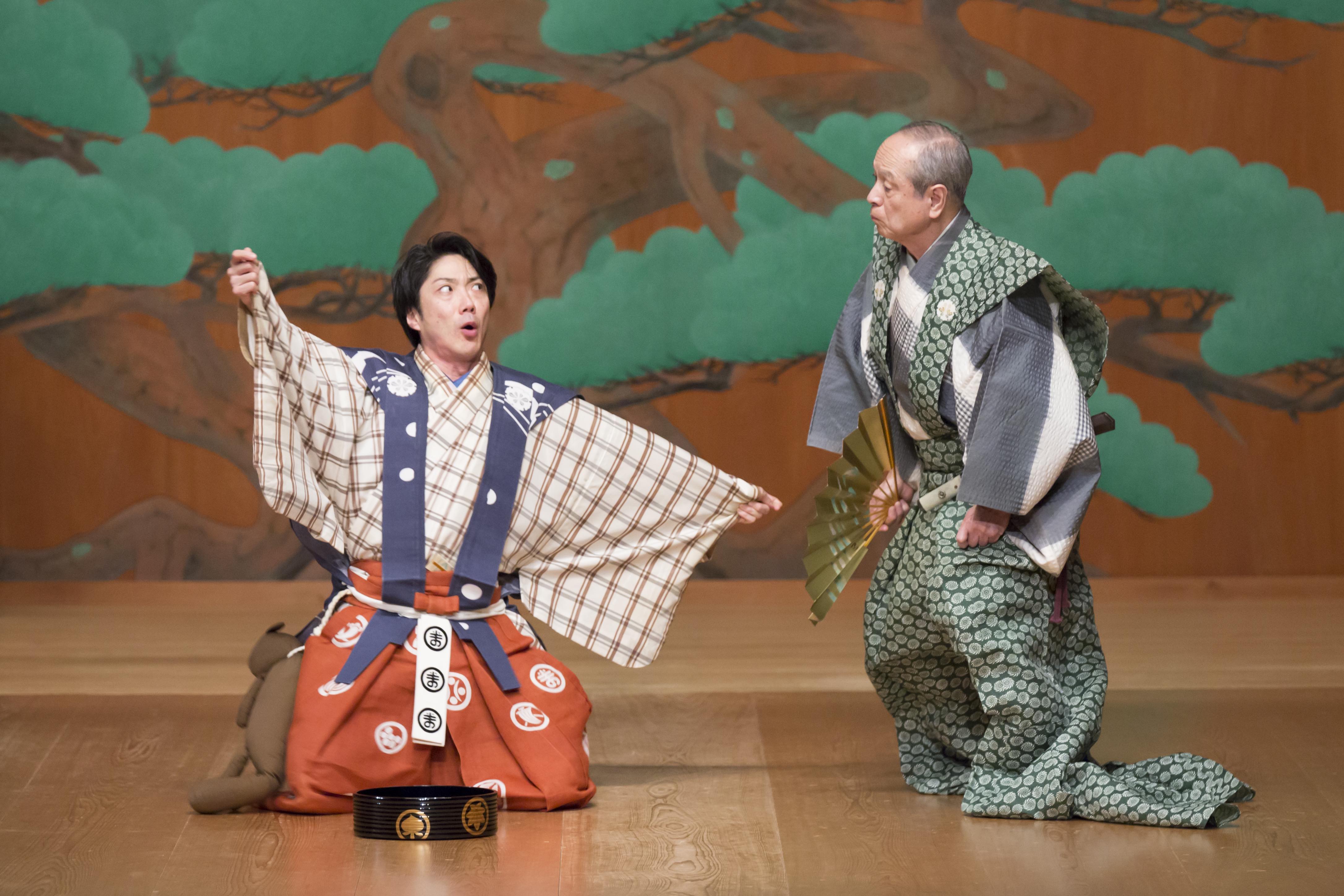 * Kyogen "Kakure Tanuki" Photo: Shinji Masakawa
* Kyogen "Kakure Tanuki" Photo: Shinji Masakawa
Nakamori : I think that even with one song, there is more than one way to perform it. Depending on how you think about it, there are many different ways to perform it, and there are many different ways to express it, so it's fun to choose it yourself. For example, by choosing a Noh mask, you can become a young woman or an old woman, so you can freely direct it while imagining it in your mind. It may be close to the feeling of shooting a movie. Cooking a song so that the audience can enjoy it freely is also one of the joys.
It is also our job to nurture customers who say it is "interesting." We want customers who don't get tired of seeing it just once, but go to the Noh theater again and again, watch various performers, and enjoy themselves, thinking, "That person was like this," or "This person is like this." We think it is important to nurture customers who can enjoy the same ingredients in different ways.
